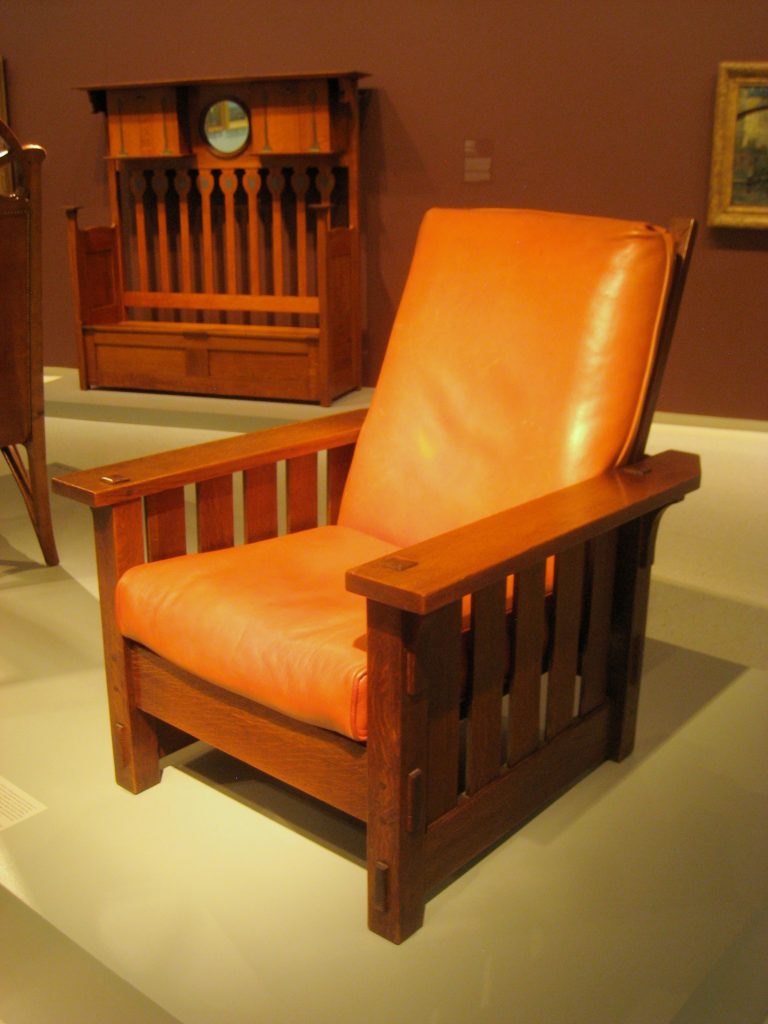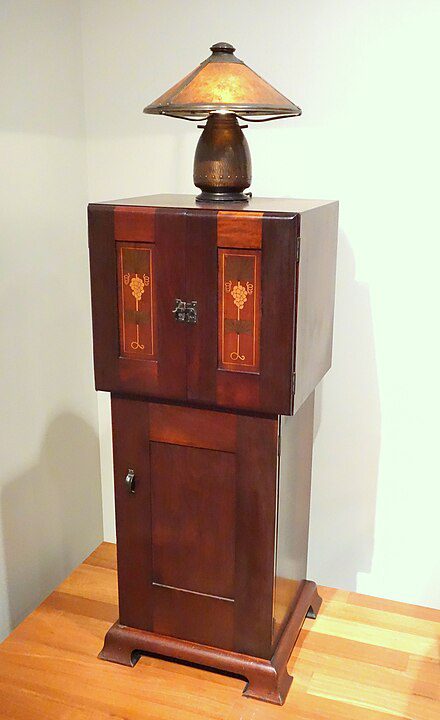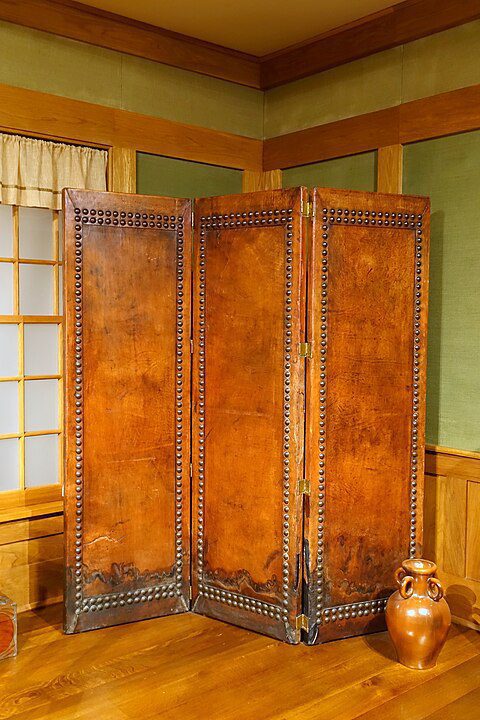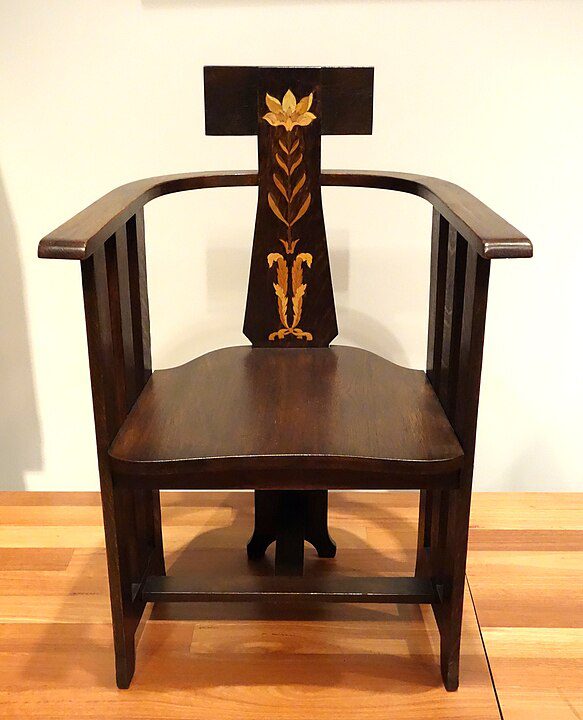
Gustav Stickley (1858-1942) was an American furniture maker, designer, and a leading figure of the Arts and Crafts movement in the United States. His name is synonymous with the Craftsman style, characterized by its simplicity, functionality, and use of natural materials. Through his work, Stickley sought to promote a return to handcraftsmanship and to elevate the design and production of everyday objects. His influence extended beyond furniture to architecture, interior design, and the broader philosophy of the Arts and Crafts movement, advocating for beauty and quality in the domestic environment.
Born in Osceola, Wisconsin, Stickley was one of eleven children in a family of German descent. The Stickley family moved several times during Gustav’s childhood, eventually settling in Pennsylvania. The early exposure to the manual labor and craftsmanship in his surroundings would deeply influence Stickley’s career and ethos. He started working in his uncle’s chair factory in Brandt, Pennsylvania, where he learned the furniture business from manufacturing to marketing.

In 1883, Stickley moved to Binghamton, New York, and, with his brothers, established the Stickley Brothers Furniture Company. Initially, the company produced furniture in a variety of styles popular at the time. However, Gustav’s trip to Europe in 1898, where he encountered the British Arts and Crafts movement, profoundly impacted his design philosophy. Inspired by the movement’s principles, he returned to the United States with a renewed vision for American furniture and interior design.
Starting Craftsman
In 1900, Stickley founded the Craftsman Workshops in Eastwood, New York, and began producing furniture and accessories under the Craftsman name. This marked the beginning of what would become the hallmark of the American Arts and Crafts movement. Stickley’s furniture was sturdy, simple in design, and made of high-quality American oak. It eschewed excessive ornamentation for a focus on craftsmanship and the inherent beauty of materials.
Stickley also launched “The Craftsman” magazine in 1901, which became a pivotal platform for promoting his ideas about design, architecture, and living in harmony with nature. The magazine featured articles on home building, interior design, and even social commentary, reflecting Stickley’s holistic approach to creating a better living environment. It played a crucial role in spreading the Arts and Crafts philosophy across America, influencing both professionals and homeowners.

Under Stickley’s guidance, the Craftsman style became emblematic of a uniquely American aesthetic, characterized by its emphasis on simplicity, utility, and harmony with the natural environment. Stickley’s designs for homes, known as Craftsman bungalows, became especially popular, offering an affordable and aesthetically pleasing housing solution that resonated with middle-class America.
Business Troubles
Despite his success, Stickley’s business faced financial difficulties in the 1910s, exacerbated by changing tastes and the onset of World War I. In 1915, he filed for bankruptcy, and by 1916 he had lost control of the Craftsman Workshops. Though he continued to work in furniture design and retail, his influence and output diminished.
Gustav Stickley’s legacy, however, endured far beyond his lifetime. The revival of interest in the Arts and Crafts movement in the late 20th century brought renewed appreciation for Stickley’s work and philosophy. Today, original Stickley furniture pieces are highly prized by collectors, and the principles of the Arts and Crafts movement continue to inspire designers and architects.

Stickley’s impact on American design and the Arts and Crafts movement is profound. He championed a holistic approach to living that emphasized beauty, functionality, and a deep respect for craftsmanship. Through his furniture, writings, and personal philosophy, Gustav Stickley helped shape an aesthetic that remains influential and revered in the realms of design and architecture.




